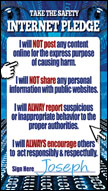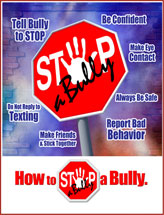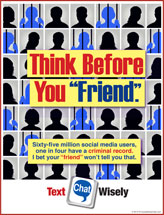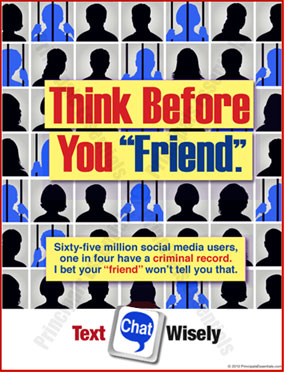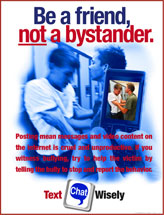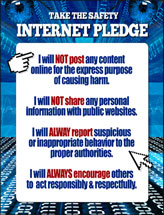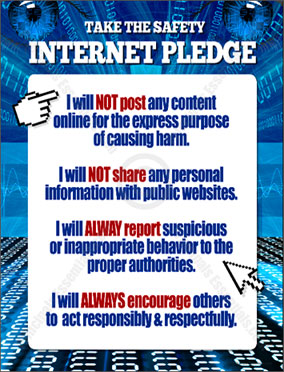Item #W19
I will NOT post any content
online for the express purpose
of causing harm.
I will NOT share any personal
information with public websites.
I will ALWAY report suspicious
or inappropriate behavior to the
proper authorities.
I will ALWAYS encourage others
to act responsibly & respectfully.
Problem
Alarming Report about Students Online*:
• 35% experience unwanted sexual content
• 80 texts per day are sent by average teens
• 20% of teens have been cyberbullied
• 68% agree cyberbulling is a problem
Solution
1. Start an awareness program that helps students understand the hidden online dangers.
2. Encourage positive dialogue about Internet safety.
3. Implement Internet safety education and keep parents informed of potential problems.
E-mail, cell phones, chat rooms, blogs, instant messages and social networking sites can invite trouble for your students from cyber-bullying to more serious Internet dangers. These dangers can consist of making threats; issuing insults and slurs; and other activities that are designed to inflict harm or damage to a person's life or reputation.
What makes socializing over the Internet so intense is the veiled nature of an Internet presence. Similarly, the vast and repeated dissemination of the offensive material and lurking sexual predators over the Internet amplifies the problem. Young students, whose social lives and identities are increasingly based on Internet contacts, could find it difficult to escape when encounters sour. And while many Internet interactions occur outside of school, they still come face-to-face each day on school grounds. Once in school, many students must then endure the in-person impact of Internet harassment and potential physical violence.
* National Center for Missing & Exploited Children
Tips on Internet Student Safety



